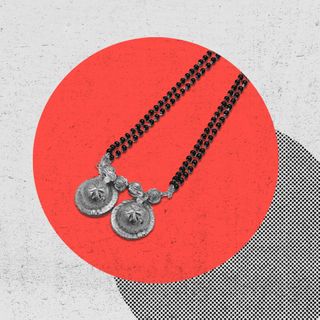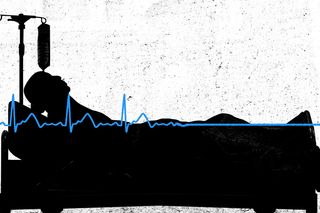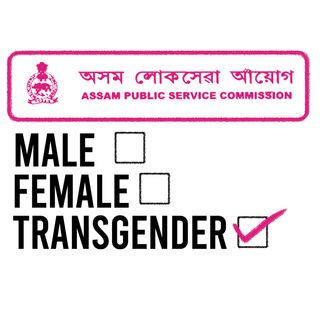
Women Need to Be at the Center of Debates About Legalizing Euthanasia
Research suggests women — who are more likely than men to request euthanasia — are largely influenced by fear of burdening their families while chronically ill.

All around the world, debate about euthanasia ebbs and flows, with only a few legalizations (with strict stipulations) moving the needle forward on the issue. Most recently, New Zealand voted in a countrywide referendum to legalize assisted dying for terminally ill patients, and the Netherlands — considered the pioneering country for political reform on euthanasia — expanded its policy to now allow all demographics access to assisted dying, including children aged between one and 12.
At the center of the euthanasia debate is patient autonomy, and the idea that a person undergoing unbearable suffering must be able to exercise their personal choice to end their life. For this reason, children are considered the most questionable group when it comes to giving consent. But there is another group for whom agency and consent are, surprisingly, not clear cut: adult women. And it’s imperative global debates about legalizing euthanasia start centering them.
Since assisted dying began to be legalized in certain parts of the world, women have made up a majority of those opting for it. As women live longer than men, and life spans continue to lengthen globally, women are disproportionately more likely to experience elder abuse, to have fewer economic resources in their old age, and to suffer from the kinds of terminal or chronic diseases that typically inform the regulations around euthanasia in countries that have legalized the practice.
Related on The Swaddle:
Etiquette Has Always Been Used to Control Women
Aside from women’s biological and social experiences that inform the decision to end one’s lives, the method — assisted dying — may also be partly why more women than men opt for euthanasia, feminist scholars write. Seeking help from another — specifically, an authority figure (often male, within medical institutions) — to die is a passive trait, and in a patriarchal world, passivity is conditioned as a uniquely feminine trait. This bears out in the discrepancy between normal suicide rates and assisted suicide rates in countries that have legalized euthanasia, such as in the Netherlands, where the rate of the latter is four to five times higher than the former.
Ultimately, for women, passivity in life looks like self-sacrifice, devoting one’s time and energy to others, being unable to advocate for one’s own freedom. Passivity in death, feminist scholars argue, looks like euthanasia.
It’s an interpretation at distinct odds with the broader discourse around euthanasia, which heavily centers the idea of choice. Euthanasia is practiced in three forms: letting people die without making any active moves to end their life (passive euthanasia), and either assisting someone while they end their life (also called assisted suicide or physician-assisted suicide) or directly ending someone’s life at their request by administering, say, a fatal injection. Each version espouses individual choice, dignity, control, and autonomy of those suffering. The purpose of euthanasia is to empower, activists argue; the ability to choose to end one’s life in moments of unbearable suffering is supposed to continue the virtues of dignity and agency not just in life, but also in death.
It’s more difficult to reconcile, then, euthanasia and feminism — and more to the point, euthanasia’s place in a world slowly growing more gender-equal. Passivity, and the patriarchal influences that condition it, breed low self-worth. It is no secret women are praised for self-sacrifice — for deprioritizing their health and life for the sake of their families’, even when it means suffering, as a group, a disproportionate number of mental health issues arising from lifetime inequity. This lived experience can’t be separated from women’s experiences of euthanasia: A comparative study of the Dr. Jack Kevorkian cases in the U.S. in the 90s found the terminally ill women whom he helped to end their lives did so due to fear of being a burden to their families in their ongoing ill state.
When a group is consistently taught to define itself by how much it can devalue and deny itself in favor of another, can the ultimate devaluation — death — ever be a choice made with free will?
The question is a slippery slope — if consistently denied, it could lead to undermining feminism itself, by not considering women as rational actors who know what’s best for them. If blindly followed, it spins into ‘choice feminism’ territory, which ignores context and runs the risk of glorifying euthanasia without ever considering the factors that lead to it. Neither are desirable outcomes.
But it’s a question that has to be considered, especially amid the current trend of legalizing euthanasia within a world in which patriarchy still flourishes. Take where the current trend of euthanasia in the Netherlands is going: the law in the country describes the qualifying criteria for accessing euthanasia as experiencing “unbearable suffering with no prospect of improvement,” the scope of which was expanded after 2007 to include not just physiological diseases, but cognitive decline, too. Older women (50+) make up the largest proportion of women seeking assisted dying in the Netherlands. This group is also disproportionately affected by age-related neurogenerative diseases such as Alzheimer’s, which erodes cognition, memory, and behavior. Alzheimer’s is arguably a woman’s disease, affecting more women than men and progressing in women at rates much quicker than in men.
Related on The Swaddle:
Why Alzheimer’s Is a Woman’s Disease
The inclusion of cognitive decline as acceptable criteria for euthanasia further complicates the question of autonomy: if a person, while in possession of all their mental faculties, signed an advanced directive stating they wanted to be euthanized when their cognition deteriorates past a certain point but resists the euthanasia when that time actually comes, should the physician respect the patient’s present wishes or those they articulated before their dementia set in? The physician’s decision, then, will not only have to grapple with this ethical minefield but will also be dependent upon the physician’s own views about women’s autonomy and agency. For example, a 2000 paper documented how physicians were found to dismiss women’s requests to die because of “the expectation that women will be altruistic, self-abnegating caregivers,” explaining how physicians’ own views on gender roles so often color euthanasia decisions.
That’s why when it comes to ensuring patient autonomy, countries that have legalized some form of euthanasia have stipulations in place to minimize consensual grey areas as far as possible. New Zealand, for example, requires a person’s illness to be fatal within six months for them to qualify for assisted dying, requires the person to obtain approval from more than one physician, and requires the patient to be of sound mind at the time of dying. And if countries like India — which, in 2018, legalized passive euthanasia and will sooner or later be having a broader conversation on the subject — really want to make euthanasia accessible to all, they must take a hard look at how euthanasia, without gender-sensitive regulation, can further the idea that women are expendable, non-rational agents who don’t understand their own wellbeing.
In the end, denying a woman the choice to end her life is a far graver offense to feminism and female agency than the possibility of that choice not completely being her own. In the meantime, as the 2000 paper concludes: “in cases of intolerable pain and suffering, a woman’s request to die should not be questioned on the grounds that she is incapable of determining her own good; women, like men, should be extended the right to decide when their life is burdensome, meaningless, and no longer worth living” — no matter the reason.
Rajvi Desai is The Swaddle's Culture Editor. After graduating from NYU as a Journalism and Politics major, she covered breaking news and politics in New York City, and dabbled in design and entertainment journalism. Back in the homeland, she's interested in tackling beauty, sports, politics and human rights in her gender-focused writing, while also co-managing The Swaddle Team's podcast, Respectfully Disagree.
Related


Unprecedented Protests Force Poland to Pause Abortion Ban
